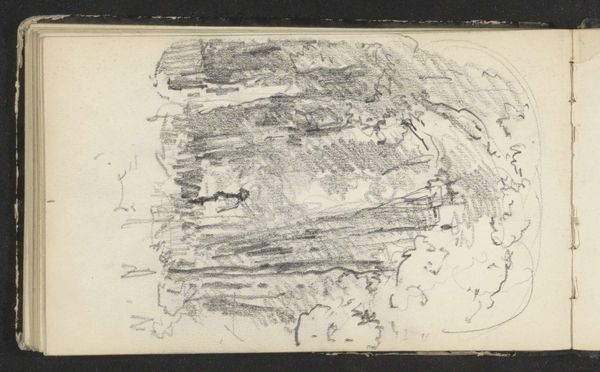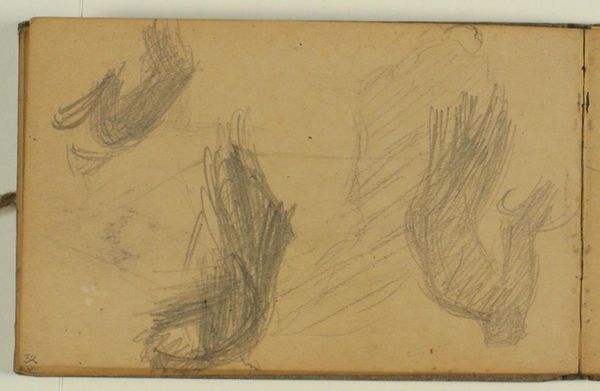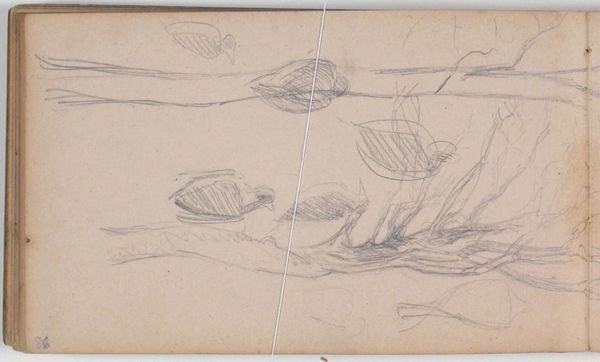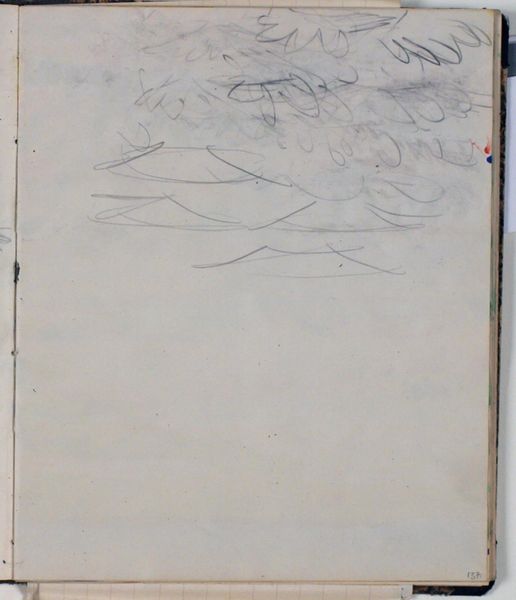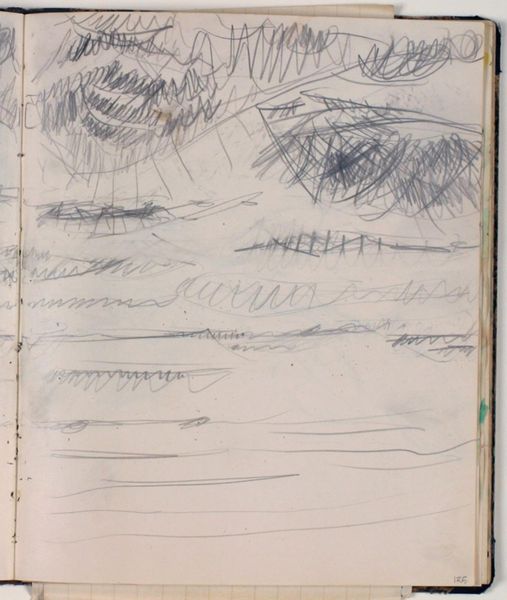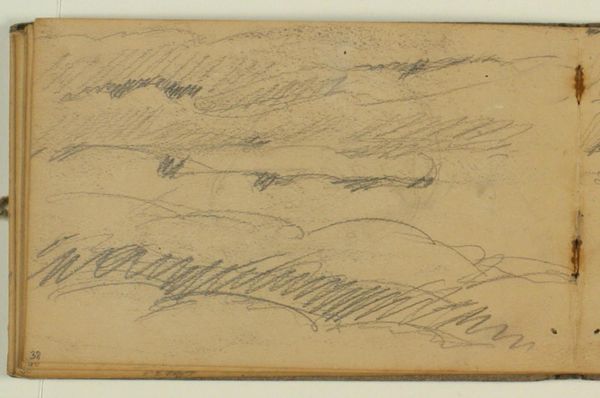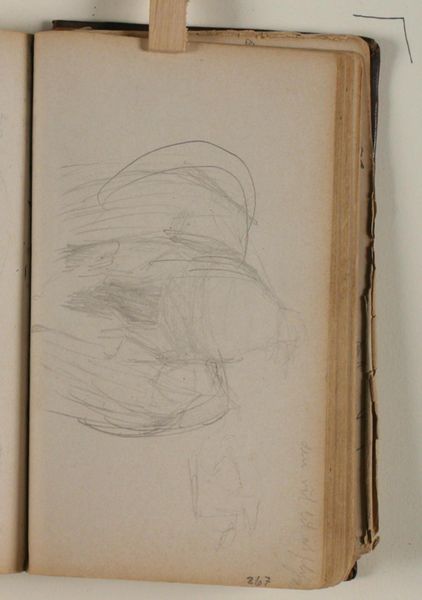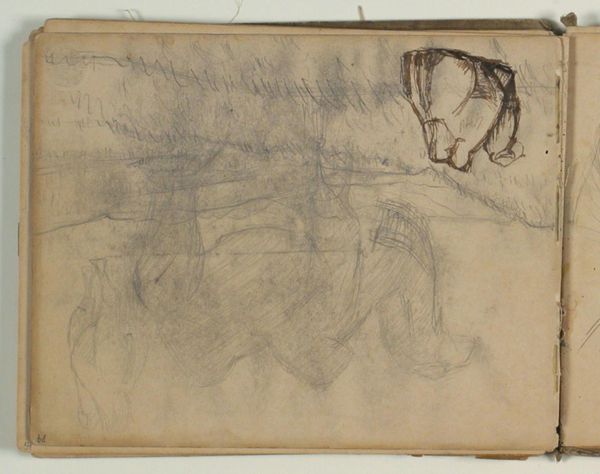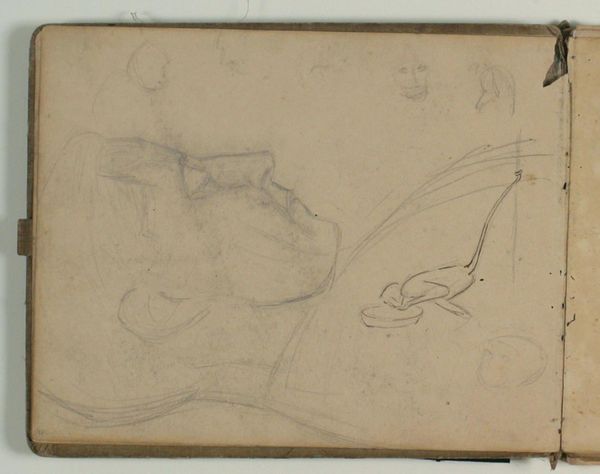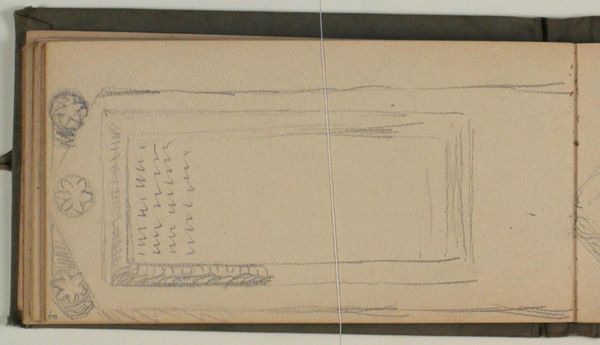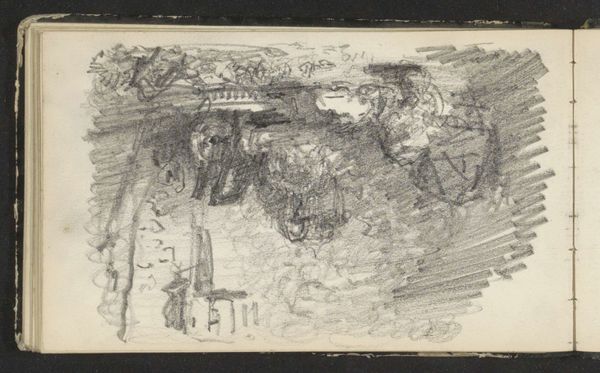
Landskabsskitse (?) samt skitse af fuglehoved 1900 - 1905
0:00
0:00
drawing, pencil
#
drawing
#
landscape
#
pencil
Dimensions: 204 mm (height) x 260 mm (width) x 13 mm (depth) (monteringsmaal), 204 mm (height) x 260 mm (width) (billedmaal)
Curator: This sketch by Niels Larsen Stevns, believed to have been made between 1900 and 1905, resides here at the SMK. It’s crafted in pencil, depicting a landscape alongside a bird's head study. Editor: My first impression is one of fleeting observation, a transient moment captured in hurried lines. There is an openness, a stark simplicity to the composition and to the limited medium of pencil on paper. It almost reads like an invitation to meditate on ephemerality. Curator: Absolutely. Sketchbooks often offer precisely this: intimate glimpses into the artist's process of visual thinking. The rapid lines suggest an attempt to capture not just what he saw, but how the landscape *felt* to him in that moment. This ties to broader themes within landscape art, which, particularly at the turn of the century, often became intertwined with concepts of national identity and belonging. Do the Danish landscapes portrayed in Stevns body of work tie into an ideal or experience of Denmark? Editor: This reading seems reasonable. We can also read these sketches as explorations of human relationship with the natural world. But consider: even within idealized depictions, social dynamics inevitably emerge. Who is granted access to such beauty? Is there an underlying tension between preservation and exploitation, inherent within landscape painting itself? The small bird at the top of the image is not only about aesthetics. It evokes a kind of freedom, contrasting, maybe subtly so, to land rights and the people who historically benefit the most. Curator: You present a potent argument about accessibility and rights. The bird itself might serve as a symbol of natural, almost untamed freedom. However, the bird image also evokes a broader history of symbolic weight: In mythology and religion, birds appear as psychopomps. A detail such as this suggests, perhaps, an interest not just in documentation, but the inherent cultural echoes layered in the simplest forms. Editor: An essential insight! Art is never truly created in a vacuum; so often artists take the weight of centuries with them even to render the slightest drawing. Curator: It's a rich paradox to contemplate - how simple sketches like these become sites for the negotiation of meaning and of cultural legacy. Thank you for this perspective. Editor: Thank you, too. Artworks carry such nuance, particularly when we examine their historical contexts as part of present-day conditions. It gives new life to the image.
Comments
No comments
Be the first to comment and join the conversation on the ultimate creative platform.

